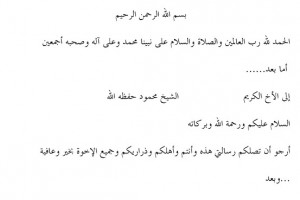
Bruce is bascially saying that the IC has failed completely…..which we know it has. This also supports my view that the folks who dreamed up the latest air attack are also out of touch with AQ reality. But the media has dumbed down the public enough that they believe almost anything….
The thing I find interesting is that Bruce has openly said that the IC is a failure. He also raises some questions that would suggest bin Laden was not alive, i.e. the focus on the Arab Spring. This does not fall into line with UBL as much as it does with Zawahiri….and his Muslim Brotherhood.
As I noted, the fact that someone with Hoffman's stature is questioning the IC should make people pause and reflect on the state of affairs within those halls….
Bruce Hoffman: What Osama Was Thinking at the End
Bin Laden was more fearful that his men might be affected by the weather than by any effort of the Pakistani government to apprehend them.
By releasing 17 documents seized last year from Osama bin Laden's compound in Abbottabad, Pakistan, the U.S. government has supplied a needed corrective to the bunkum that has passed for analysis throughout the war on terrorism's first decade.
For too long, government officials and pundits alike have made extravagant and incorrect claims about the weakness of al Qaeda and the irrelevance of its founding leader.
Americans were repeatedly told that al Qaeda had ceased to exist as an organizational entity, that it had become nothing more than a hollow shell, a leaderless group of disparate individuals unconnected to any central authority. Bin Laden was said to be completely estranged from the movement he created: living in a remote cave, isolated from his fighters, sympathizers and supporters, unable to exercise any meaningful role in the movement's operations and future trajectory.
The picture that emerges from the seized Arabic-language documents is of a leader involved in both al Qaeda's day-to-day operations and long-term strategy. Ever the policy wonk, opining on topics as diverse as the “Arab Spring” and the declining U.S. economy, bin Laden also retained his penchant for attempting to micromanage—however unresponsive his franchises and affiliates may have been beyond the villa.
Given the severe limitations imposed on bin Laden by the U.S. intelligence and military operations, it is striking how far his movement has been able to expand beyond South Asia. The documents indisputably depict an al Qaeda that in 2011 had an active presence in more places than it did on Sept. 11, 2001. Bin Laden himself is seen as struggling to control this now geographically far-flung organization, determined to try to shape events in Pakistan, Afghanistan, Yemen, Somalia and Iraq, among other places.
That he may have been “out of sync” or had fraught relations with the affiliates is therefore not surprising. This was the trade-off he accepted after 2001 to ensure the movement's survival by devolving power to the local franchises. Nonetheless, he remained both determined and able to communicate his wishes to al Qaeda's growing stable of associates. Getting them to listen was of course a problem familiar to any manager coping with rapid expansion.
Much has already been made in previous document leaks of bin Laden's musings about the need to rebrand al Qaeda in light of its waning influence and tarnished image in the Muslim world, a result of its affiliates killing more of their coreligionists than their declared enemies. But a careful reading of the declassified documents (made available through the U.S. Military Academy's Combating Terrorism Center) presents a more nuanced understanding of bin Laden's preoccupation with this issue.
His concerns in fact centered on his belief that Western media and al Qaeda's enemies were misportraying the movement by focusing only on its violent side and ignoring its political aims and aspirations. Bin Laden thus sought a new name for the movement that would more accurately reflect its ideological pretensions and self-appointed role as defender of Muslims everywhere.
Perhaps the most notable communication, however, is one dated Aug. 27, 2010. In it, bin Laden fears for the safety of his fighters and followers in Pakistan—not because they might be arrested or detained by the authorities, but because torrential rains and flooding were then afflicting that country.
This is astonishing. Bin Laden was more fearful that his men might be affected by the weather than by any effort of the Pakistani government to apprehend them. This assertion alone speaks volumes about how comfortable he and his minions found their refuge there.
There is little in the documents that suggests it was terribly difficult for al Qaeda fighters to travel from Iran to Pakistan—or, for that matter, between Afghanistan and Pakistan. And there's no indication that, once in Pakistan, they had any trouble traversing Baluchistan en route to the Federally Administered Tribal Areas or North-West Frontier Province, two of the movement's favorite haunts.
All this information is so illuminating that one wonders why the White House announced last Thursday that it has no plans to release any more of the material gathered at Abbottabad. Usually documents are classified to protect intelligence sources and methods. In this case, however, everyone knows the source of these documents and the method by which they were obtained.
Those with whom bin Laden was in communication also already know that the U.S. government has possessed these communications for more than a year. They presumably changed their security procedures long ago.
Why, then, are there no plans to release any more documents? Given that there reportedly are several thousand more, what logic is there to release so few but refuse to declassify so many others? How and why were the 17 documents released last week selected?
What do the other documents tell us about al Qaeda's relationship with Afghan and Pakistani militant groups—or with elements of the Pakistani government and other countries, including Iran? What were al Qaeda's relations with other extremist groups across the globe—especially in North and West Africa, the Levant and Southeast Asia?
After the thousands of American lives that have been lost thus far in the war on terrorism, and the billions of dollars consumed by this monumental struggle, the American public surely deserves to be afforded the fullest possible picture of the person and the movement that so irrevocably changed our lives.
Mr. Hoffman, a distinguished scholar at the Woodrow Wilson International Center for Scholars, is director of Georgetown University's Center for Security Studies and a senior fellow at the U.S. Military Academy's Combating Terrorism Center.
A version of this article appeared May 9, 2012, on page A13 in some U.S. editions of The Wall Street Journal, with the headline: What Osama Was Thinking at the End.
Phi Beta Iota: DefDog points to some obvious contradictions. We continue to doubt the truthfulness of the US Government account of all that pertains to Bin Laden and Abbottabad. Both our domestic and our foreign sources agree that Bin Laden died in 2001. Most question the authenticity of the documents and flash drives “found” at the compound in Abbottabad (a year after Blackwater and CIA were mucking about creating safehouses known to all the locals). Absent the actual body of Bin Laden, and absent a forensic analysis of the actual documents (paper source, ink type, professional side by side comparisons, etcetera, we seriously doubt any of this is as claimed. It is well known that those who question the official story are likely to lose their livelihood. We speculate that Dr. Hoffman is tip-toeing through the tulips.
See Also:
Bin Laden Show 19: White House Photo Ops
Bin Laden Show 08: History from 2001 Updated
Bin Laden Show: Entries 01-84 UPDATED 4 May 2012
Journal: Reflections on Integrity UPDATED + Integrity RECAP




